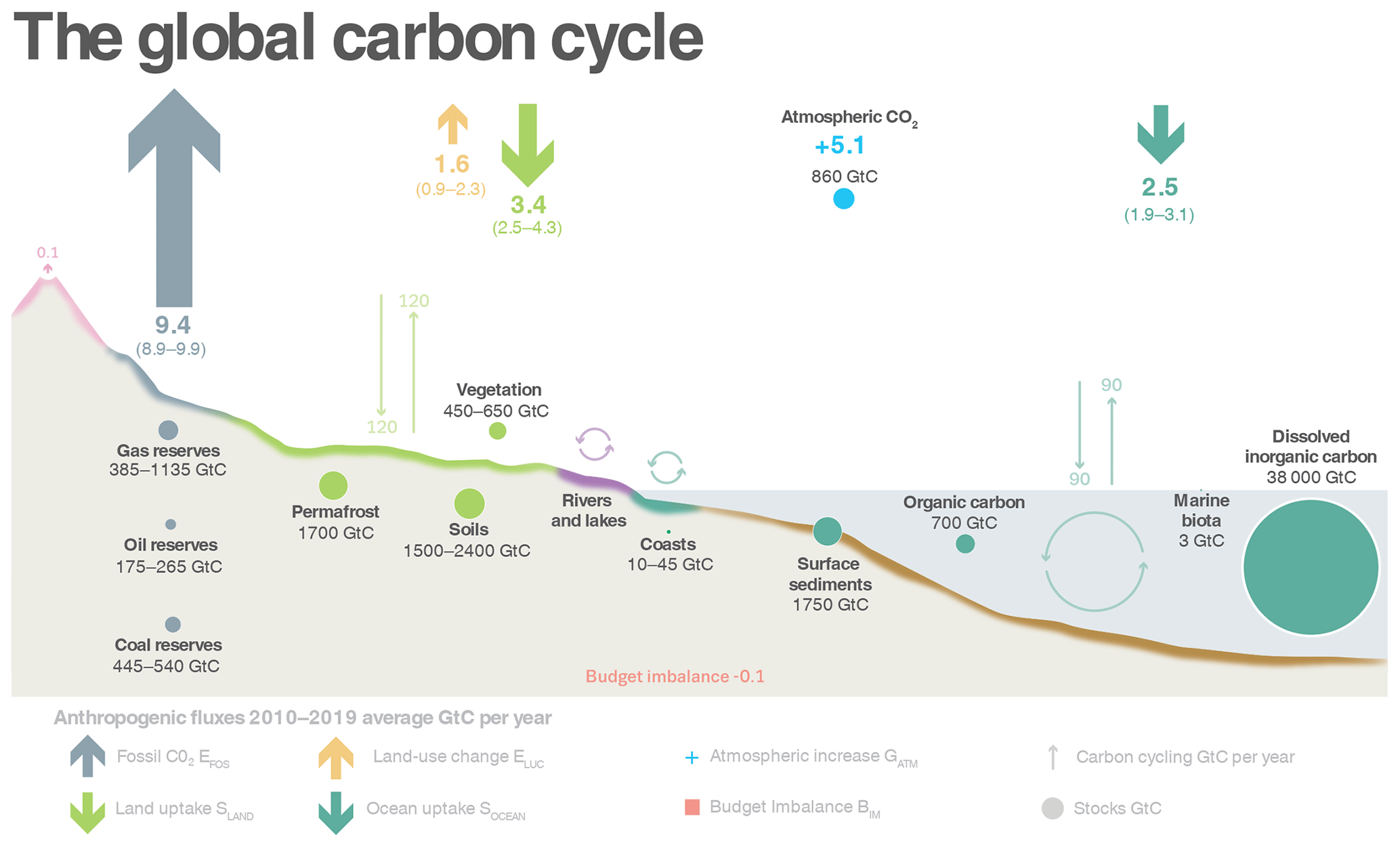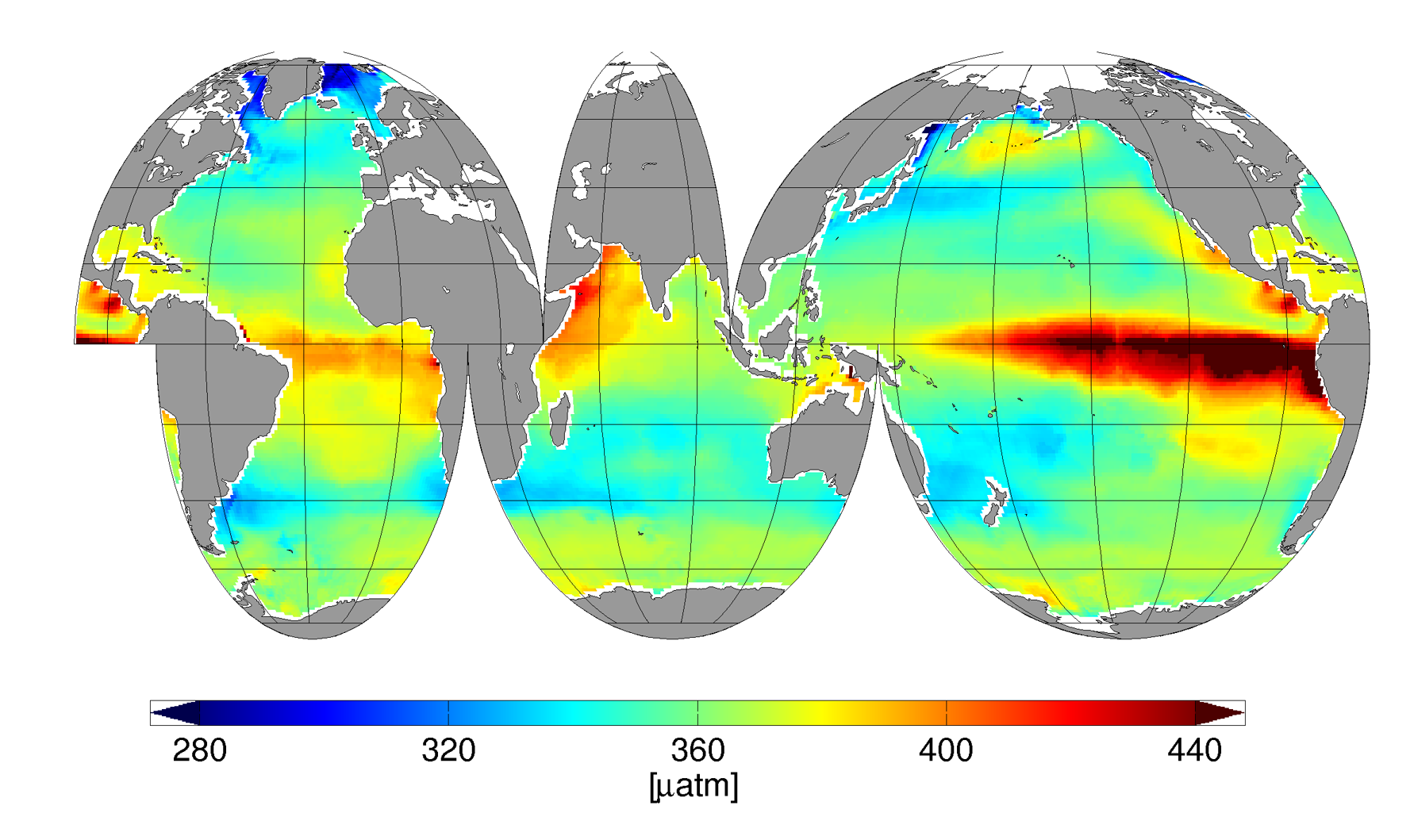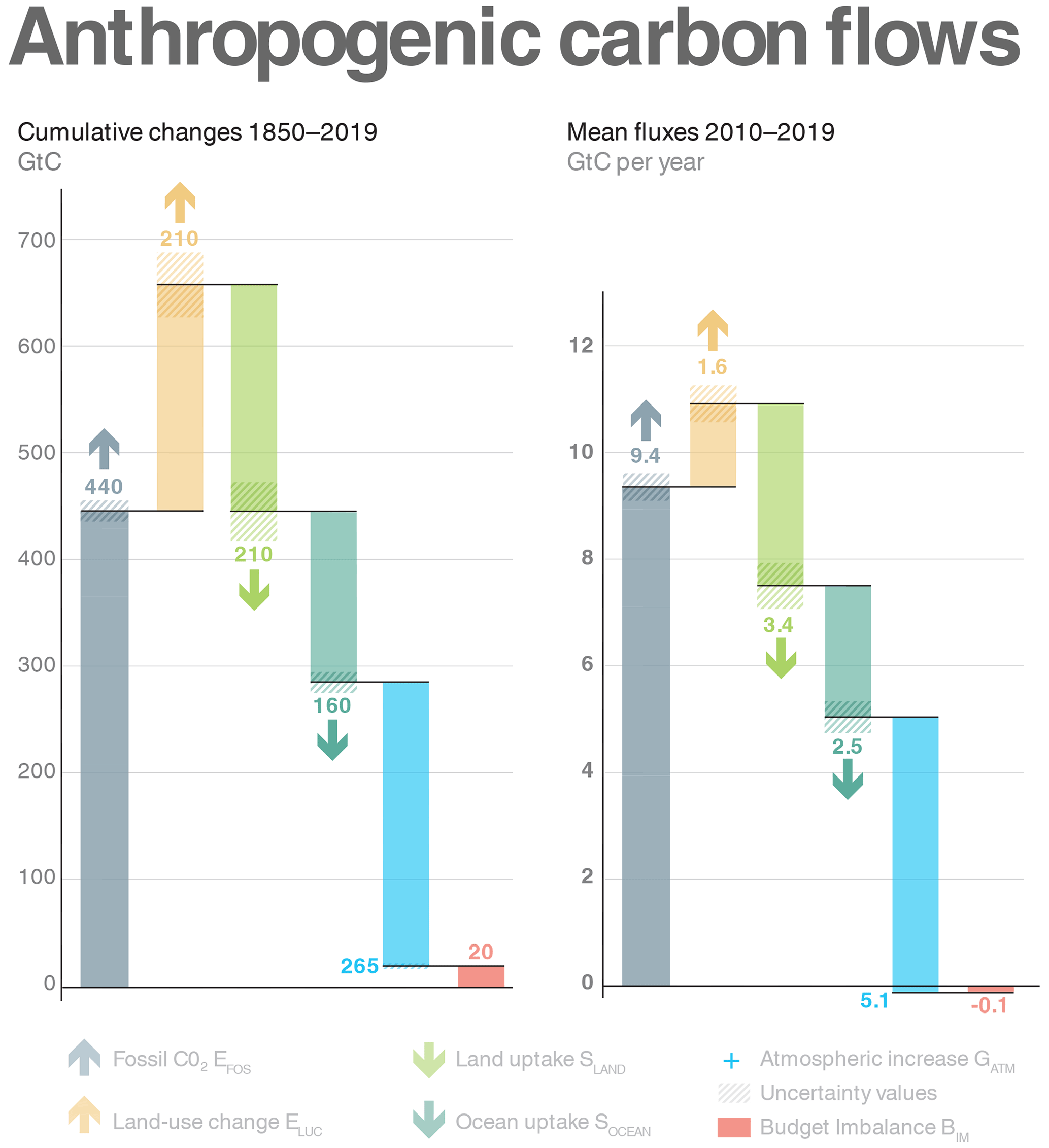Exploring the Carbon Cycle with Data
A deeper understanding of the carbon cycle can be gained by analyzing real-world datasets. This data interactive focuses on three case studies on time scales ranging from months to hundreds of thousands of years. Many of these datasets have provided critical insights into our understanding of the carbon cycle, which is briefly described below.

Source: Friedlingstein et al., 2020
In terms of definitions, a carbon reservoir stores carbon and is measured in gigatons of carbon (GtC, roughly equal to the mass of 200 million elephants). Some of the most important carbon reservoirs includes the ocean, soils, vegetation, fossil fuel reserves, and the atmosphere. Carbon fluxes refer to the amount of carbon that gets exchanged between reservoirs per year.
Prior to 1750, the carbon cycle was largely balanced. On land, photosynthesis captured 120 GtC of carbon from the atmosphere each year while respiration by plants, animals, and decomposers released 120 GtC back into the atmosphere each year. Similarly, the oceans absorbed around 90 GtC of each year and released 90 GtC back to the atmosphere each year.

Source: Landschutzer et al., 2014
The figure above shows surface ocean pCO2 values. The red regions represent locations where deep carbon enriched water upwells to the surface, releasing carbon back into the atmosphere. The blue regions represent regions where phytoplankton photosynthesis depletes surface ocean dissolved inorganic carbon concentrations, resulting in the flux of carbon from the atmosphere into the ocean.

Source: Friedlingstein et al., 2020
Humans have perturbed the carbon cycle. The flux of carbon from the land to the atmosphere has increased from fossil fuel combustion and land use change (example: deforestation). Higher atmospheric CO2 concentrations have caused land uptake rates of atmospheric CO2 to increase as the earth has greened (higher photosynthesis rates on land due to carbon fertilization). In addition, higher atmospheric CO2 concentrations have also caused ocean uptake rates of atmospheric CO2 to increase (larger concentration gradient), resulting in ocean acidification.